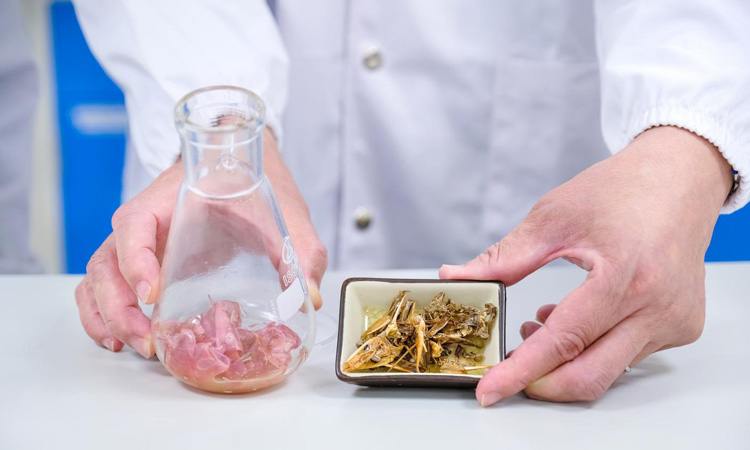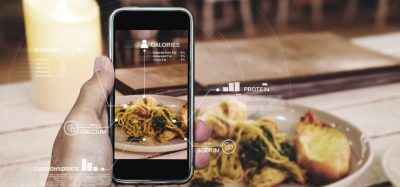Scientists develop ‘greener’ way to extract chitin from prawn shells
- Like
- Digg
- Del
- Tumblr
- VKontakte
- Buffer
- Love This
- Odnoklassniki
- Meneame
- Blogger
- Amazon
- Yahoo Mail
- Gmail
- AOL
- Newsvine
- HackerNews
- Evernote
- MySpace
- Mail.ru
- Viadeo
- Line
- Comments
- Yummly
- SMS
- Viber
- Telegram
- Subscribe
- Skype
- Facebook Messenger
- Kakao
- LiveJournal
- Yammer
- Edgar
- Fintel
- Mix
- Instapaper
- Copy Link
Posted: 11 May 2020 | Sam Mehmet (New Food) | No comments yet
Chitin serves a wide variety of uses in the food industry, such as food thickeners and stabilisers, and as anti-microbial food packaging.


NTU researchers used discarded prawn shells and fermented them using sugars from fruit waste, producing high-quality chitin that has a wide variety of uses such as food thickeners and stabilisers. Credit: NTU Singapore
Scientists at Nanyang Technological University, Singapore (NTU Singapore) have developed a ‘green way’ to create chitin, a fibrous substance consisting of polysaccharides (the major constituent in the exoskeleton of arthropods and the cell walls of fungi), by using two forms of food waste – prawn shells and discarded fruit – and fermenting them.
The NTU method is said to be more sustainable than current approaches that chemically extract chitin from marine waste, which the scientists explained are costly, consumes large amounts of energy and leads to chemical by-products that may be discharged in industrial wastewater.
Professor William Chen, Director of the Food Science and Technology programme at NTU, who led the research, said: “The huge amount of shrimp waste has sparked industrial interest as it is an abundant source of chitin. However, there is a problem in the extraction method, which is both unsustainable and harmful to the environment.
“Our new method takes crustacean waste and discarded fruit waste and uses natural fermentation processes to extract chitin. This is not only cost-effective, but also environmentally-friendly and sustainable, and helps to reduce overall waste,” said Prof Chen.
The NTU team tested ten sources of common fruit waste such as white and red grape pomace, mango and apple peels, and pineapple cores, in various fermentation experiments. They found that fruit waste contained enough sugar content to power the fermentation process that breaks prawn shells down into chitin.
They used ‘X-ray diffraction’ technique to determine the atomic and molecular structure of the chitin created using the new method and its level of purity was measured using a ‘crystallinity index’. The extracted crude chitin samples from prawn shells fermented using fruit waste gave a crystallinity index of 98.16 per cent, which compared to commercial chitin samples with an index of 87.56 per cent. The fermentation process using the sugar content from the fruit waste was also said to produce higher quality chitin than the commercial one.
“Our research has led to not only higher quality chitin but a more sustainable and environmentally-friendly process too. While the various types of fruit waste produced good results, the sugar from the pomace of red grapes had the best performance. This is also a cost-effective method for industry-scale operations, which could be of potential interest to wineries looking to reduce and upcycle their waste,” said Prof Chen.
By leaving chitin to undergo further stages of fermentation, the NTU research team also found they could ferment it further into chitosan, which can be used as a growth enhancer in plant fertilisers, or as a controlled drug delivery system in pharmaceutical treatments.
The NTU team is now exploring ways to use chitosan to enhance previous research innovations such as food packaging created using soybean residue or Okara. This could potentially lead to the development of a more durable cellulose film with anti-microbial and anti-bacterial properties.
Prof Chen is also working with multiple companies to spur the adoption of greener industrial methods in producing chitin and chitosan.
Related topics
Food Waste, Packaging & Labelling, Research & development, Sustainability, Technology & Innovation








